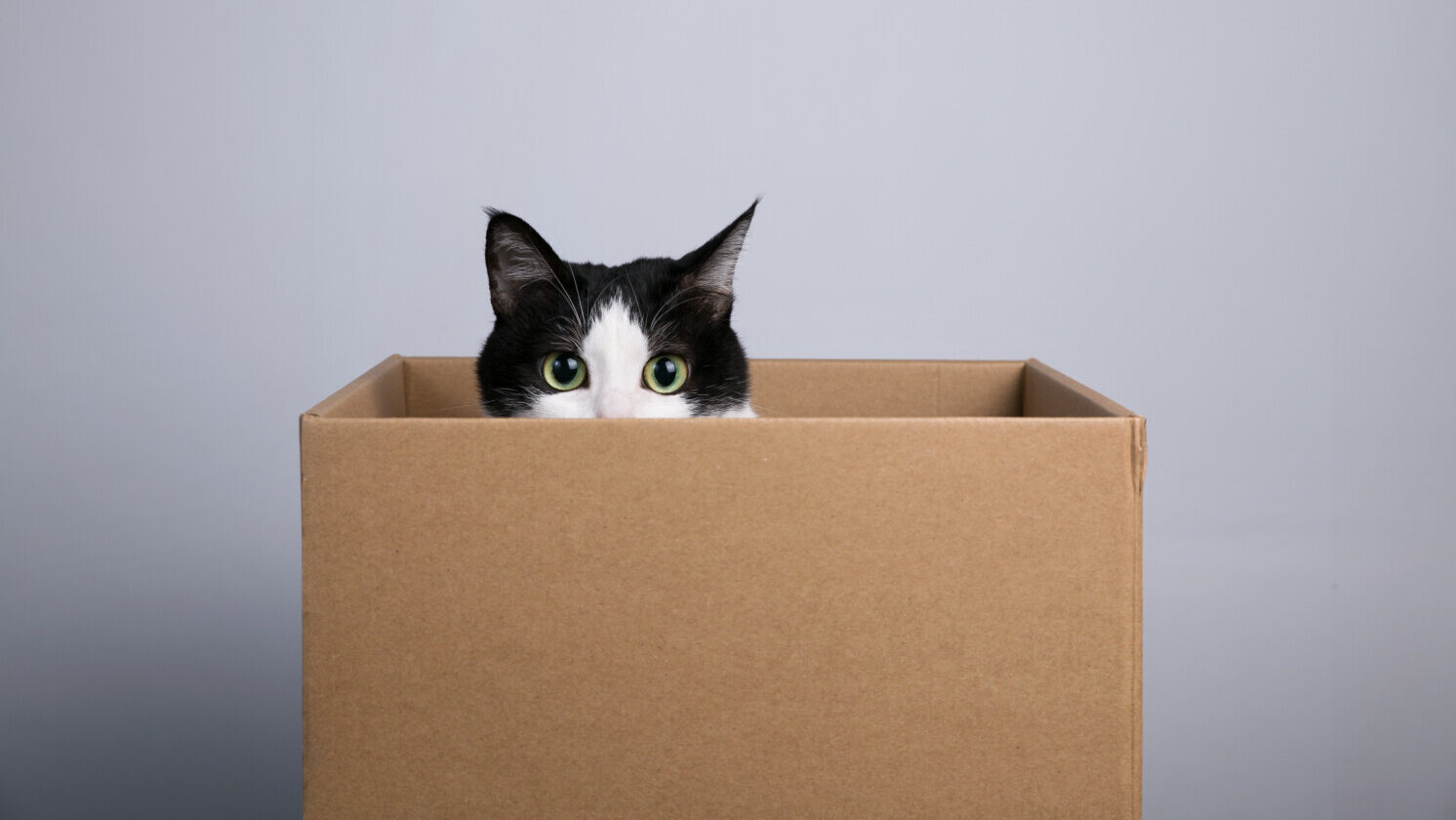Study shows cats will sit in boxes even if they’re an optical illusion

If a delivery truck pulls up, you might think, “Hurray! My package has arrived!”
What’s your cat thinking?
“Hurray! Here comes another box!”
That box may contain a cool new toy from Petco, but your cat will probably be most excited about the box. In fact, the feline love of boxes has been well documented on the internet with Twitter feeds devoted to it and numerous YouTube videos.
There are some seemingly obvious reasons why cats love boxes: They can curl up in them and generate warmth (cats love warm and cozy spaces). Furthermore, they are ambush predators, and boxes are good hiding places where they can settle before pouncing on their prey.
But beyond boxes, do cats like the square shape in general? In 2017, cat owners took to Twitter to collectively point out that their cats would sit in anything box-like — even a 2D outline of a box. People would tape a square on the floor to see if their cats settled in it, and in many cases, they did.
it works pic.twitter.com/GSMIpq4wfR
— becca🌵🌞 (@beccastsko) April 10, 2017
Curious about this tend, an animal psychology researcher named Gabriella Smith, who is currently a Ph.D. Student at Messerli Research Institute in Austria, decided to conduct an experiment. Several years ago when Smith was conducting her graduate studies at Hunter College in New York, she attended a lecture on how dogs react to optical illusions. After the lecture she went home and gave some thought to her roommate’s cat.
“Cats like boxes and even shapes outlined on the floor,” she told Gizmodo. But, “would they sit in a box that is an illusion?”
In June of 2020 as the COVID pandemic began to unfold, Smith formed a research team and put out a call on Twitter to pent-up cat owners, asking if they’d like to help her answer this question. Would their cats sit in an optical illusion of a square? Five hundred cat-owning citizen scientists answered the call. In April 2021, Smith’s research, entitled, If I Fits, I Sits: A Citizen Science Investigation Into Illusory Contour Susceptibility in Domestic Cats, was published in Applied Animal Behaviour Science.
Smith sent the cat owners paper cut-outs that would serve as the corners of boxes on the floor. Some faced inward, creating the illusion of a 2D box, which is called Kanisza square. Others faced outward, so there was no illusion of a square.
Based on the resulting data, the answer to Smith’s question is yes: Cats can be fooled by an optical illusion. Not only do they tend to sit in 2D squares, but they will also sit inside a 2D shape that looks like a square. Her Twitter post below demonstrates what the experiment looked like:
So pleased to announce that my paper, "If I Fits I Sits: A Citizen Science Investigation into Illusory Contour Susceptibility in Domestic Cats (Felis silvestris catus) has just been published in AABS! #IfIFitsISits #CatSquare #CitizenScience #CommunityScience pic.twitter.com/AXbDttnOGC
— Gabriella E. Smith M.A. (@Explanimals) May 4, 2021
While the video is pretty convincing, the overall data set is very small. Anyone who owns a cat knows that they do whatever they want, to it’s not surprising to learn that out of the 500 initial participants, only 30 cats fully completed the six-day experiment. Out of those, only nine cats sat inside one of the shapes for more than three seconds. Out of that small group, they chose the Kanisza square more often than the non-shape made by the cut-outs that faced away from each other.
So yes, the cooperative cats in Smith’s experiment helped her to prove her hypothesis. And the other 491 cats? They probably just stared at their owners like they were idiots ruining the carpet with paper and tape.





